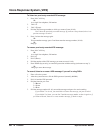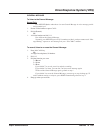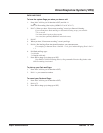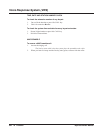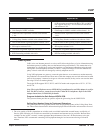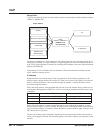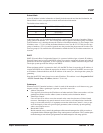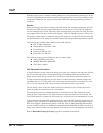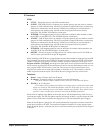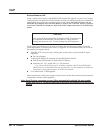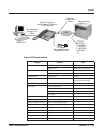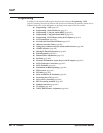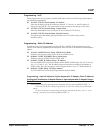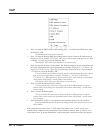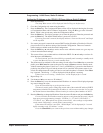
VoIP
646 ◆ Features Aspire Software Manual
With the Aspire system, a separate external gatekeeper is not required unless connecting to an out-
side H.323 endpoint/gateway which requires an outer gatekeeper or if over 50 outer addresses must
be registered. Otherwise, the Aspire provides tables within the system programming for address
resolution.
Routers
When purchasing a router for use with the Aspire IP feature, the minimum requirements would be
that it provide VPN and QoS. Current VoIP protocols for the Aspire, NGT and H.323 telephones
can not communicate over NAT. Therefore, when communications is required over NAT, the router
must support VPN. Note that a router which supports ‘VPN Pass Through’ requires a VPN server.
The priority control feature is required to prevent RTP packet loss. If a WAN is used for VoIP only
and the bandwidth is wide enough for the VoIP channel, then the QoS feature might not be required.
The following are available routers which provide VPN and QoS:
● NEC IX1000 / 2000 Series
● Yamaha RT105, RTX1000 / 2000
● Cisco 800 Series
● Furukawa FITELnet - F40
● Fujitsu SiR-170, SiR-150
The following routers provide VPN but no priority control (QoS):
● Linksys BEFSX41, DEFVP41
● OMRON MR104DV, MR104FH
● Allied Telesis AR410
VoIP Bandwidth Calculation
A digital telephone system converts an analog voice signal into a stream of bits expressed in K bits
per second (where K is used to mean one thousand). For standard PCM digital encoding, this
stream of bits is 64 K bits per second. This is 64 K bps in each direction (transmit and receive).
To improve transmission efficiency, this bit stream is compressed using a standard compression
algorithm such as G.729. The result is still a bit stream, but with fewer bits per second. For exam-
ple, G.729 will reduce the 64 K bits per second to a bit stream of 8 K bits per second.
This bit stream is then divided into chunks (called Voice Samples or Voice Frames) that can be
placed in packets for transmission over a data network.
This reduced bit stream is examined repeatedly in fixed time intervals. This examination time is
called the Voice Frame Interval. This is the time used to collect the bits for one Voice Frame. The
Voice Frame Interval is expressed in milliseconds (ms). A millisecond is one thousandth of a second.
To help determine the bandwidth requirements for the system, the NEC Technical Support web site
(http://ws1.necii.com) provides a bandwidth calculator. This web site requires registration with the
NEC Sales Support. Contact them by phone (1-800-365-1928) or EMail (ubsdsupport@necinfron-
tia.com) in order to register. It is important to remember that the bandwidth calculator is based on a
single voice channel. It takes two voice channels (send and receive) for each telephone conversation.
Refer to Bandwidth Setting for Aspire (page 692) for additional information.



